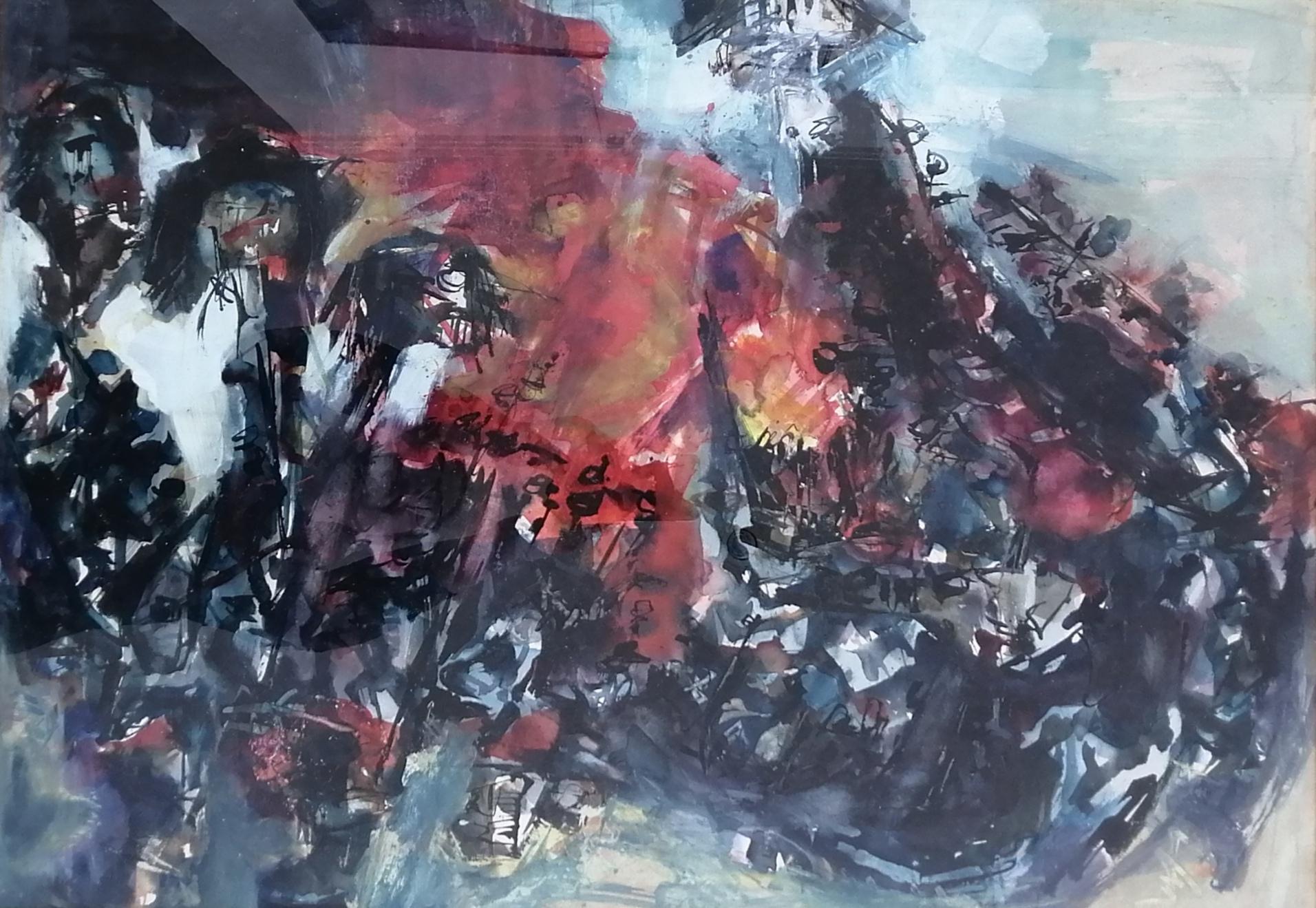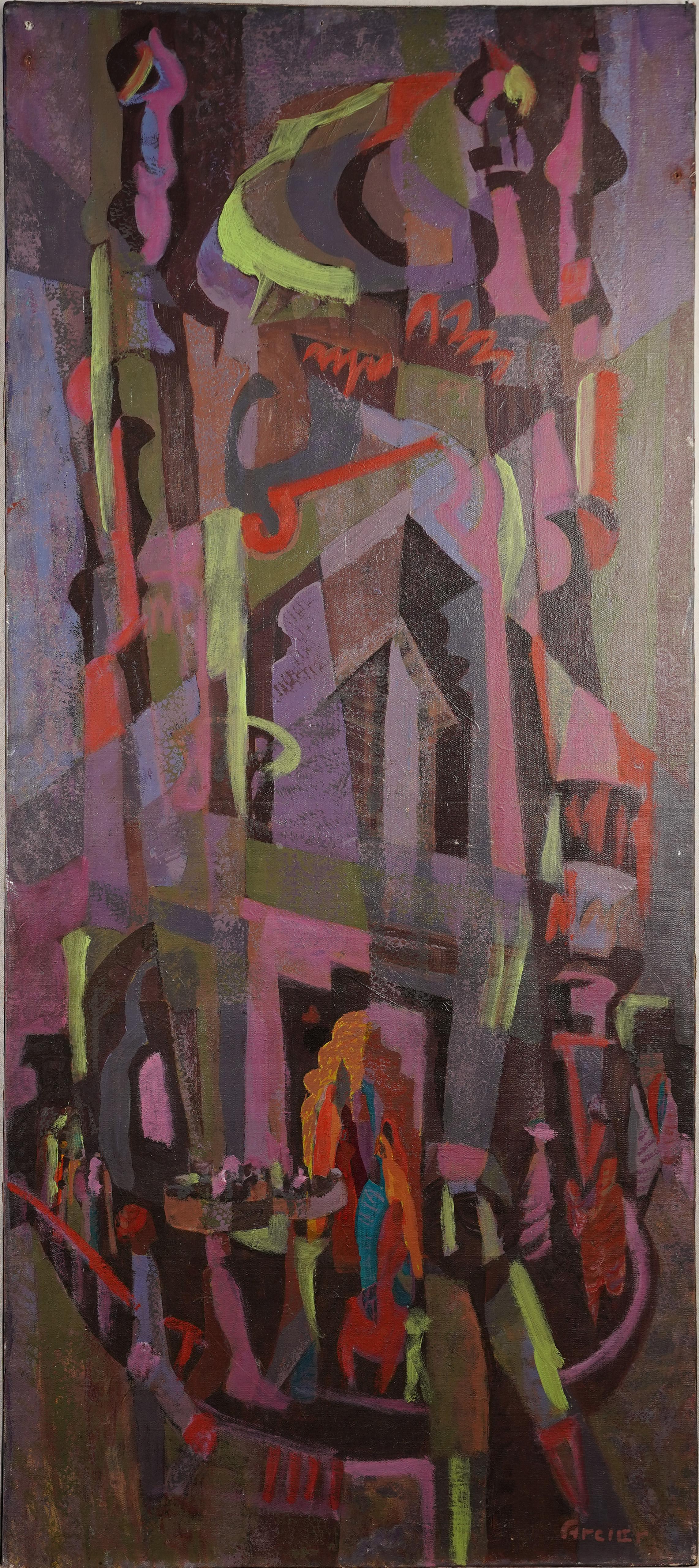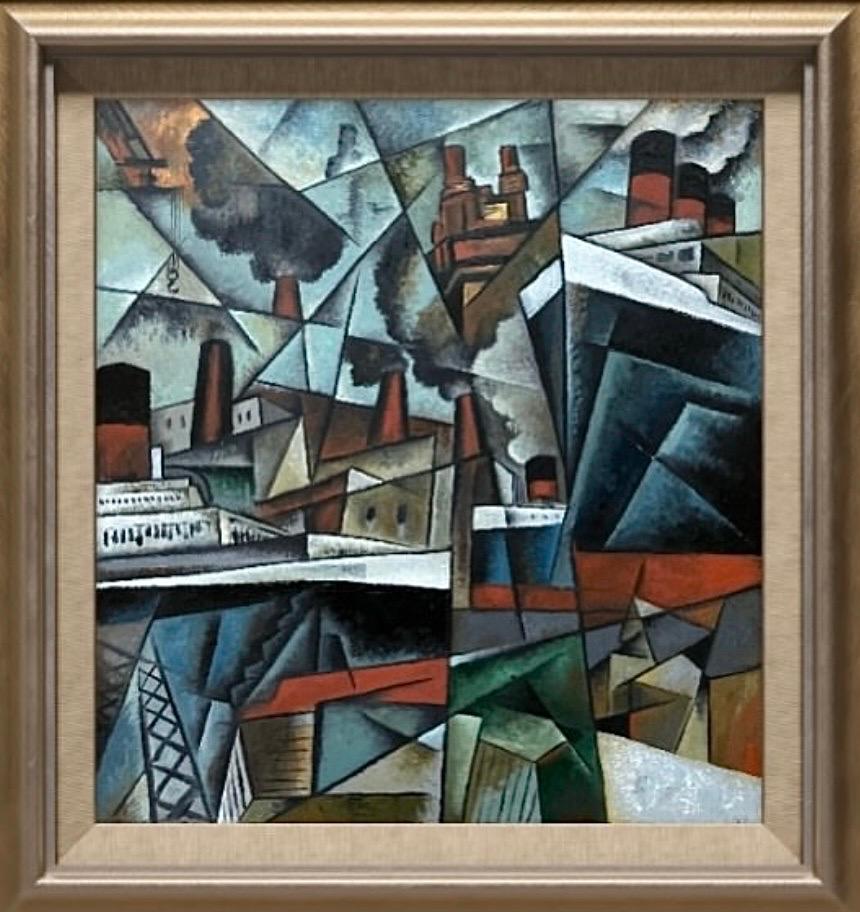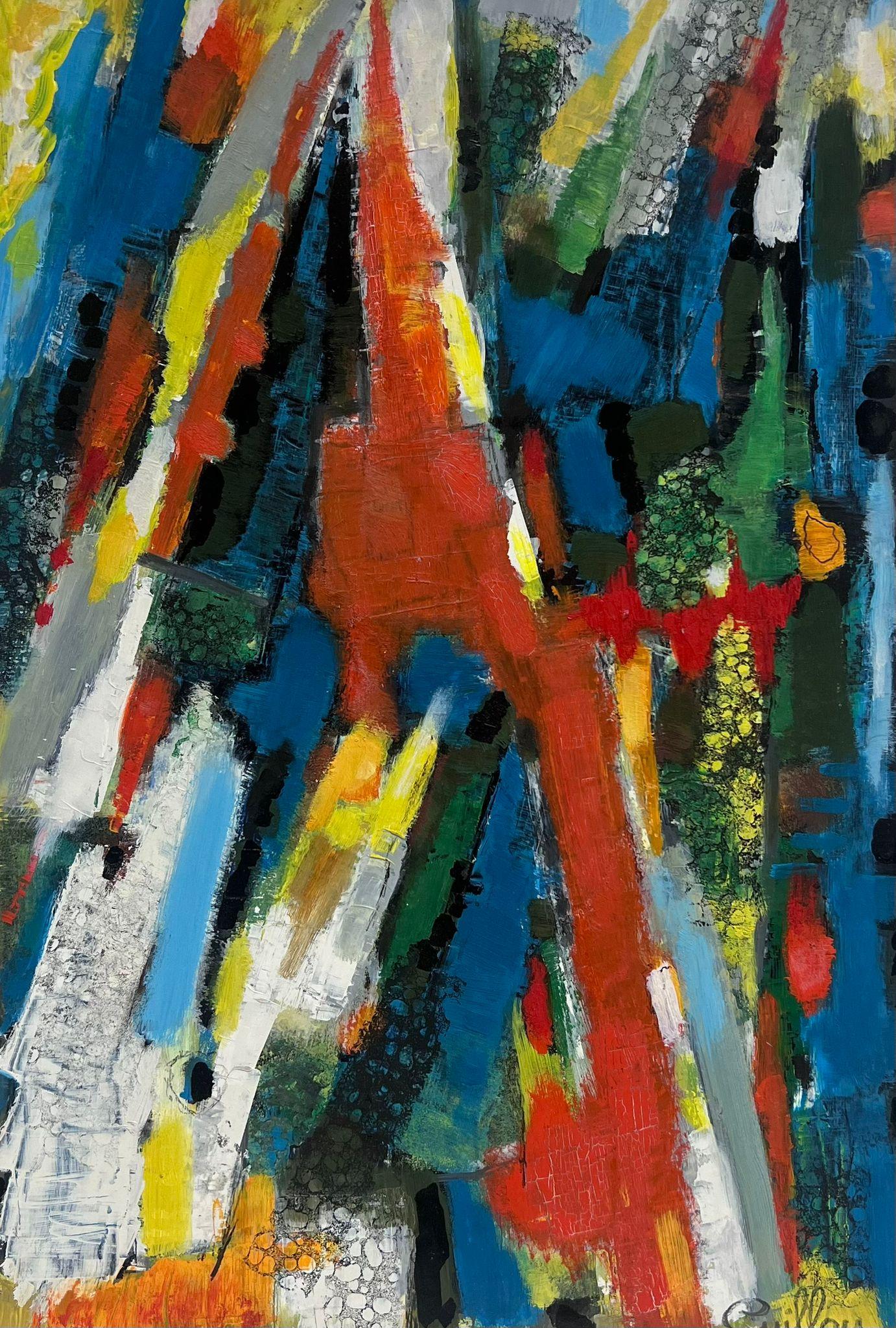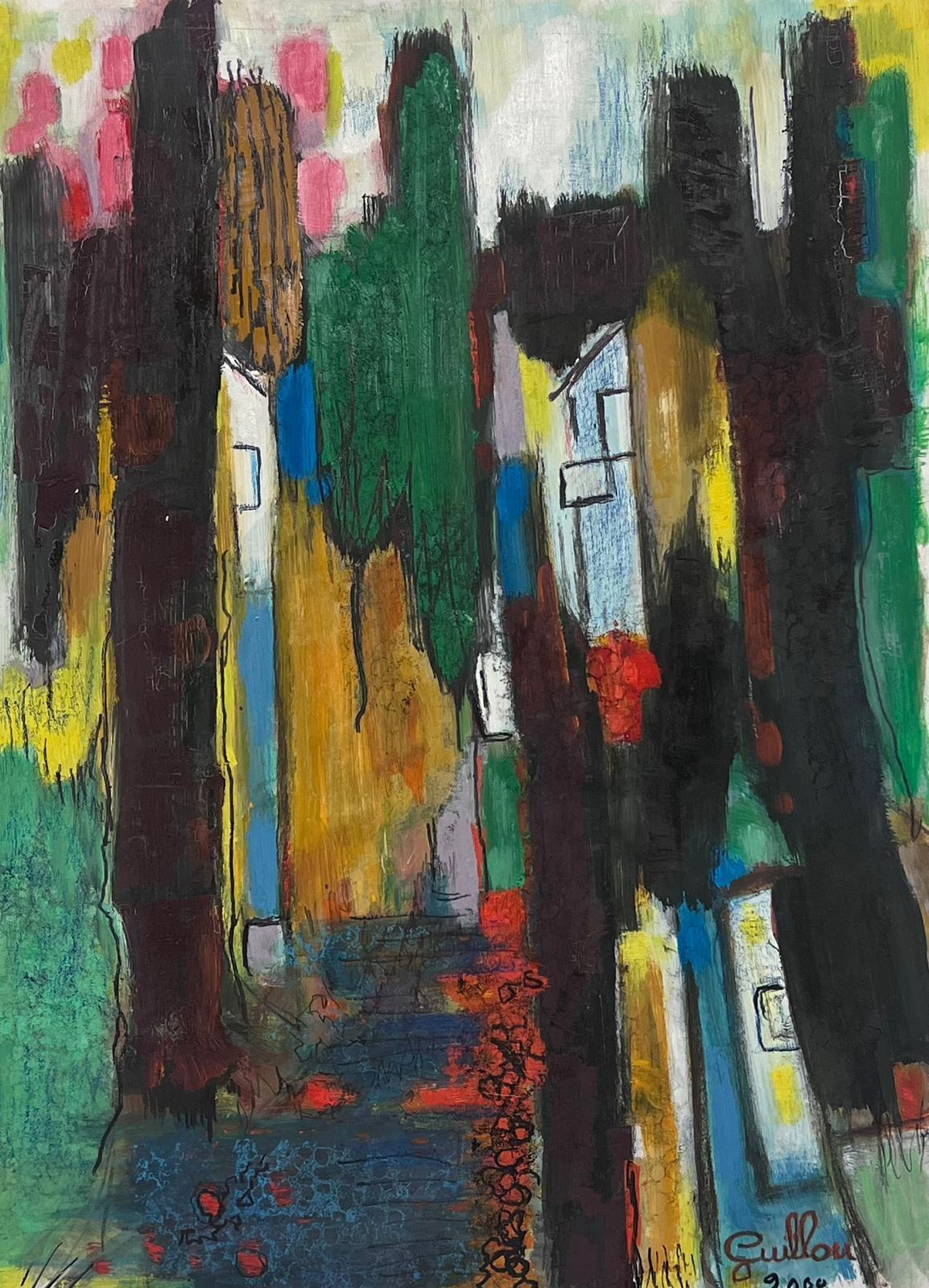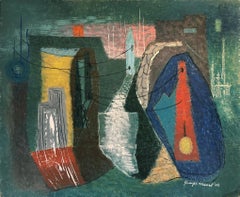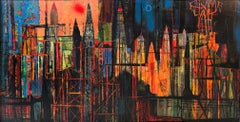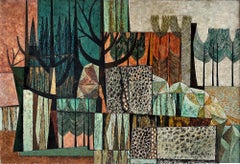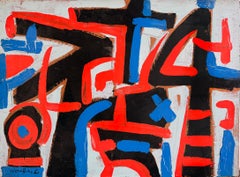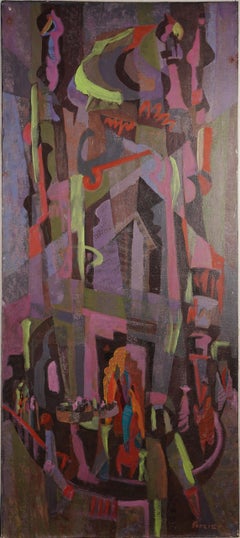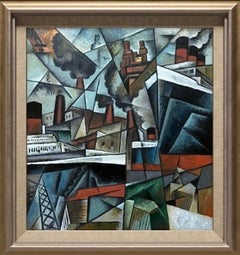Items Similar to The Burning Castle
Want more images or videos?
Request additional images or videos from the seller
1 of 15
Stefan HirschThe Burning Castle1944
1944
$48,000
£36,625.31
€41,664.03
CA$67,407.54
A$73,769.45
CHF 38,980.68
MX$880,487.19
NOK 497,442.07
SEK 454,951.25
DKK 311,208.66
About the Item
Exhibited: The North Carolina Museum of Art , October, 1967
Exhibited: November 5th to December 4, 1977
Titled: Study for Gomorrah, 1944
His work is in the collections of: Phillips Collection, The Whitney Museum of American Art, the Metropolitan Museum of Art, and the Corcoran Gallery
Housed in Period Frame.
- Creator:Stefan Hirsch (1899 - 1964, American)
- Creation Year:1944
- Dimensions:Height: 22 in (55.88 cm)Width: 27.5 in (69.85 cm)
- Medium:
- Movement & Style:
- Period:
- Condition:some light surface dirt/ grime - Frame shows age and wear.
- Gallery Location:Miami, FL
- Reference Number:1stDibs: LU3853998343
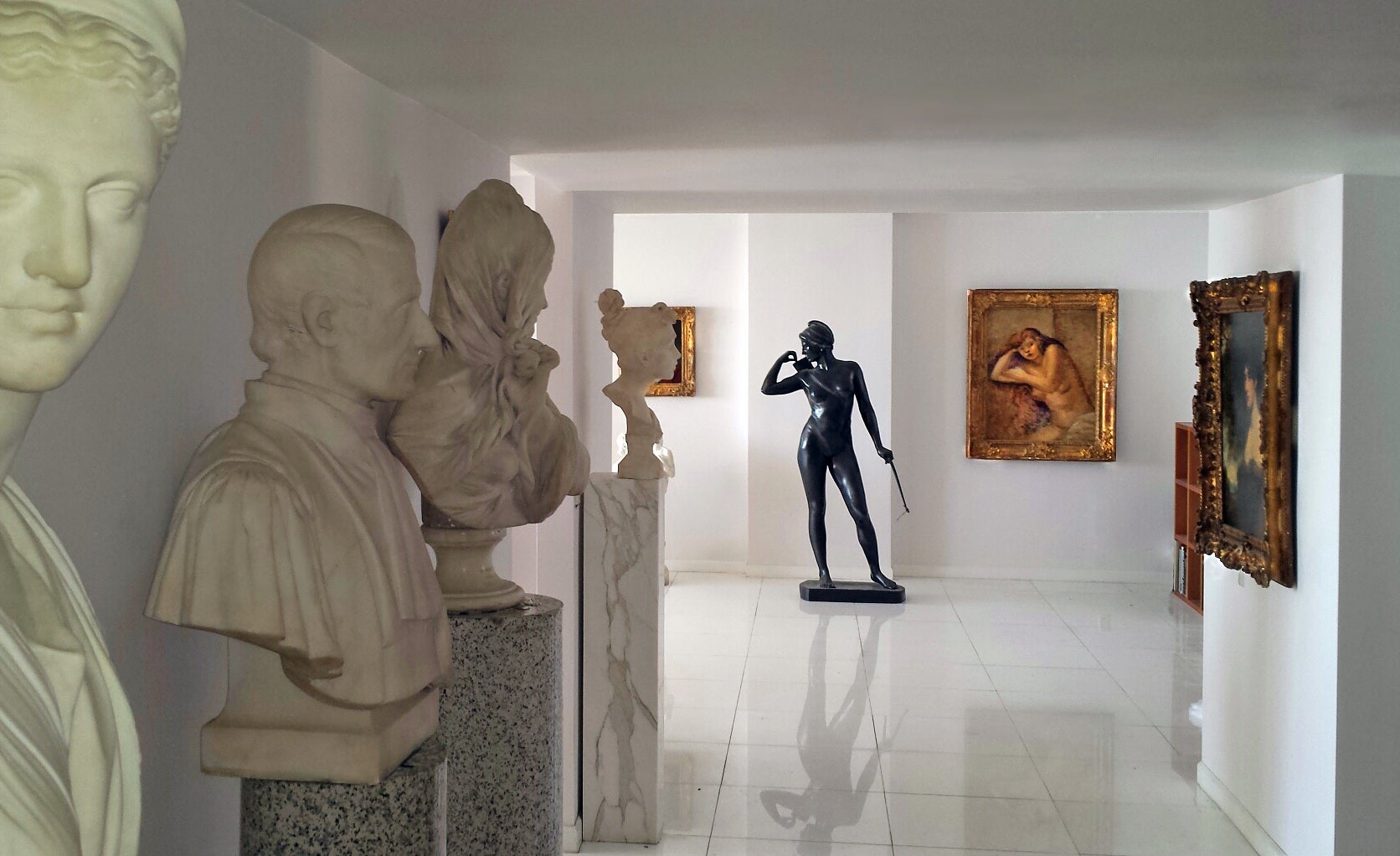
About the Seller
5.0
Vetted Professional Seller
Every seller passes strict standards for authenticity and reliability
Established in 2005
1stDibs seller since 2016
120 sales on 1stDibs
Typical response time: 1 hour
- ShippingRetrieving quote...Shipping from: Miami, FL
- Return Policy
More From This Seller
View AllCity Scape Abstract Expressionist Composition -Jackson Pollack Friend
By Joseph Meert
Located in Miami, FL
The fame, notoriety, and monetary value of an artist's work in today's market are not based on one's talent and vision. Factors such as marketing and media momentum play a defining r...
Category
1940s Abstract Expressionist Abstract Paintings
Materials
Gouache, Board
Mid-Century Rocket Ship Cityscape Abstract Skyline
By Edward Arthur Anderson
Located in Miami, FL
In the present work, the artist arranges a series of rockets and support structures in a row to mimic the New York City skyline under hyper-dramatic lighting conditions. It embodies ...
Category
1950s American Modern Abstract Paintings
Materials
Masonite, Oil
Landscape Abstraction - Mid-Century - Twenty Paintings in One
Located in Miami, FL
When it comes to abstract painting, the creation date is important. At the height of Abstraction Expressionism, overlooked Academic Artist John Atherton created a wonderfully complex painting that embodies many of the characteristics of what was going on in Mid-Century American Art. The work is simultaneously abstract as it is representational. Like a Bento Box, it's divided into sections by dividers. On close inspection, each section stands on it's own as a beautiful mini-painting yet coalesces as part of the whole. From a distance, it is eye-pleasing, but as the view gets closer and closer, new structures and details gloriously reveal themselves. This is an important painting and not unlike the work of Joaquín Torres-García. It was done in the last year of the artist's life. Signed lower right. Canvas is relined. Framed size: 30 x 41.25. The work is best viewed with top gallery lights to bring out color.
Color will look different under different lighting conditions. Atherton exhibited at the famous Julien Levy Gallery in New York and his fine art is mainly associated with Magic Realism. He participated in the seminal 1943 Museum of Modern Art exhibition, American Realists and Magic Realists. The Museum of Modern Art has 4 Atherton paintings in its collection. As an Illustrator, Atherton did covers for the Saturday Evening Post, Fortune and Holiday Magazine...
Category
1950s Abstract Expressionist Abstract Paintings
Materials
Canvas, Oil
Abstract Expressionist "Forms Divide" Like Franz Kline
By Emerson Woelffer
Located in Miami, FL
It's 1951. Who was doing painting like this? Franz Kline, Arshile Gorky, Jackson Pollock, Mark Rothko, Willem de Kooning, Adolph Gottlieb, Clyfford Still, Robert Motherwell, Lee Kra...
Category
1950s Abstract Expressionist Abstract Paintings
Materials
Masonite, Acrylic
King Arthur's Knights Battle - Sword Fighting
Located in Miami, FL
Italian Illustrator Gianni Benvenuti depicts a sword battle in a post-cubist/expressionist style. Without regard for proper perspective, the picture is as representative as it is abs...
Category
1960s Expressionist Figurative Paintings
Materials
Tempera
Storm Composition #3
By Abraham Rattner
Located in Miami, FL
An early example of Abstract Expressionism executed in 1955 during the movement's heyday and it's period of peak inventiveness. However, this work is still rooted in representation. The dark area the runs along the base of the picture is the ground and to the left, right and center there are black structures that represent trees. The work is very tactile and is composed of globs of paint that grow out from the surface and form a thick impasto. Rich vibrant saturated blues, reds and oranges create optical drama. The work look better in person. frame: 29 x 39 1/2 inches , Provenance: Kennedy Galleries
The Currier Gallery of Art...
Category
1950s Abstract Expressionist Abstract Paintings
Materials
Oil
You May Also Like
Abstract composition
Located in Genève, GE
frame with glass pane
Dimension with frame 66 x 85 x 3 cm
This abstract artwork immediately captures attention with its bold palette of swirling reds, blacks, and blues. The dynam...
Category
1960s Abstract Abstract Paintings
Materials
Watercolor
Huge Rare Vintage American School Cubist Abstract Pop Art Abstract Oil Painting
Located in Buffalo, NY
Vintage signed large abstract oil painting. Oil on canvas. Signed.
Category
1940s Cubist Landscape Paintings
Materials
Canvas, Oil
$1,996 Sale Price
20% Off
The Burning Port
Located in Los Angeles, CA
Pascal Jarrion was born in 1961 in Perpignan, France, a region known for its Catalan culture as well as its influence on artists before him, including Picasso, Van Gogh, and Maillol....
Category
21st Century and Contemporary Cubist Figurative Paintings
Materials
Wood, Adhesive, Oil
Abstract Composition
Located in Wilton Manors, FL
Chris Ritter (1906-1976). Abstract Composition ca. 1960.
Watercolor on rag paper, sheet measures 17.5 x 22 inches.
Sheet is loose and unmounted. Unframed.
Estate stamps500 on v...
Category
Mid-20th Century Cubist Abstract Paintings
Materials
Watercolor, Rag Paper
French Expressionist Abstract 20th Century Oil Painting Blaze of Colors
Located in Cirencester, Gloucestershire
Abstract Expressionist composition
by Andre Guillou (French 1925-2017)
signed oil on paper stuck on board, mounted
mount: 26 x 20 inches
board: 19 x 13 inches
provenance: the artists...
Category
Mid-20th Century Abstract Expressionist Abstract Paintings
Materials
Oil
French Expressionist Abstract 20th Century Oil Painting Blaze of Colors
Located in Cirencester, Gloucestershire
Abstract Expressionist composition
by Andre Guillou (French 1925-2017)
signed oil on board stuck on board, mounted
dated 2000
mount: 25.75 x 19.75 inches
board: 19 x 14 inches
proven...
Category
Mid-20th Century Abstract Expressionist Abstract Paintings
Materials
Oil
More Ways To Browse
Frame Print 18th Century
Music Sculpture
Used Studio Cameras
War And Peace
James Dean
Jerusalem Windows
Painting Of A Rose
Slim Aarons Palm Springs Pool
Bear Figurines
Family Photography
Lithographs By Chagall
Playboy Magazines
Vintage Press Photos
1925 Paintings
Artist Signed Lithograph
Chagal Painting
Chanel Art Prints
Magnum Photos
